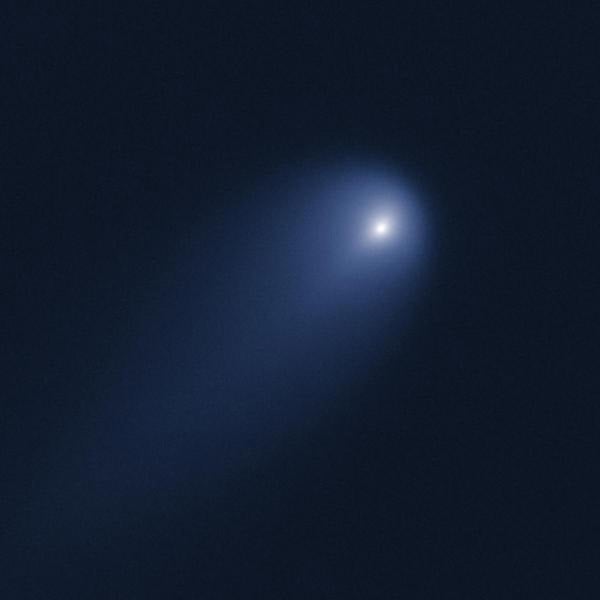“We measured the rotational pole of the nucleus. The pole indicates that only one side of the comet is being heated by the Sun on its way in until approximately one week before it reaches its closest point to the Sun,” said Jian-Yang Li from the Planetary Science Institute in Tucson, Arizona.
“Since the surface on the dark side of the comet should still retain a large fraction of very volatile materials, the sudden exposure to the strong sunlight when it gets closer to the Sun than Mercury could trigger huge outbursts of material,” Li said.
Comet ISON was imaged with the Hubble Space Telescope using the Wide Field Camera 3 on April 10.
“We measured the color of the coma and found that the outer part of the coma is slightly redder than the inner part,” Li said. “This color change is unusual in comets and seems to imply that the inner part contains some water ice grains, which sublimate as they move away from the nucleus.”
Comet ISON was discovered in September 2012 when it was farther away from the Sun than Jupiter and was already active at such a great distance. This is distinct from most other sungrazers — comets that pass extremely close to the Sun — that are only discovered and remain visible for at most several days nearest the Sun. At such a close perihelion distance from the Sun, sungrazers are expected to be intensely heated by the Sun and sublimate not only ice but also silicates and even metals, releasing a tremendous amount of dust. The expectation is high that Comet ISON will be much brighter and more spectacular than most other sungrazers when it puts on a show late this year.
“As a first-time visitor to the inner solar system, Comet ISON provides astronomers a rare opportunity to study a fresh comet preserved since the formation of the solar system,” said Li. “The expected high brightness of the comet as it nears the Sun allows for many important measurements that are impossible for most other fresh comets.”










